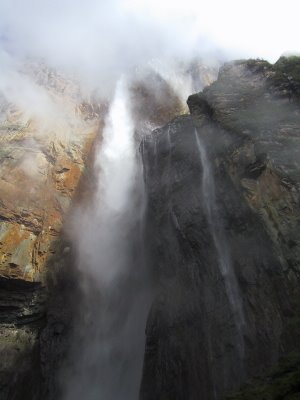I have a backlog of thoughts....but here is as good a place as any to begin: (a little german, christian and oriental gristle to gnaw on)
I've been working on a painting for a small group show about portraiture. The gallerists left it up to the artists to relate to the idea of portraiture as they saw fit. Coincidentally, I'm reading the essay,
"The Traditional Conception of Ideal Portraiture" from Coomaraswamy's "Christian and Oriental Philosophy of Art"
(click to enlarge and read)





Thinking about the show theme, I had some preliminary thoughts on the individual, the universal (principles), and the definition of
Bildung - a word in German meaning an account of how a person's character is formed. (I encountered the word while reading an article in a NYTimes Book Review,
Becoming Jane Addams.)
An account... as in a build-up, accumulation of history? of thinking? If, as Joseph Beuys says, Thinking is Form, then is Character somehow manifested physically via the artwork? So a consuming question is, what I am forming-building? Character (inner qualities-feelings)? or Caricature (outer affectations-emotions)? How does an artist stay clear of narcissistic individualism, yet still incorporate something that is spiritually personal (not to be confused with idiosyncratically personal, the non-universal). What is said and left unsaid (visible and the invisible)? And how is it that both are still able to be "seen" by the viewer (art-savvy or not) optically, intuitively or otherwise? The sixth sense? Well, I suppose these are more inquiries than finished statements circling overhead.
These other two Coomaraswamy quotes also come to mind:
1. Human idiosyncracy is thus the explanation of style and of stylist sequences: "style is the man." Styles are the basis of our histories of art, which are written like other histories to flatter our own human vanity. But the artist whom we have in view is innocent of history and unaware of the existence of stylistic sequences. Styles are the accident and by no means the essence of art; the free man is not trying to express himself, but that which was to be expressed. Our conception of art as essentially the expression of a personality, our whole view of genius, our impertinent curiosities about the artist's private life, all these things are the products of a perverted individualism and prevent our understanding of the nature of medieval art, and becomes a pathetic fallacy when applied to it....It is by no accident of time, but in accordance with a governing concept of the meaning of life, of which the goal is implied...that works of traditional art, whether Christian, Oriental or folk art, are hardly ever signed; the artist is anonymous, or if a name has survived, we know little or nothing of the man. This is true as much for literary as for plastic artefacts. In traditional arts it is never Who said? but only What was said? that concerns us: for all this is true, by whomever it has been said, has it's origin in the Spirit. So the first sane questions that can be asked about a work of art are, What was it for? and What does it mean? We have seen already that whatever, and however humble, the functional purpose of the work of art may have been, it had always a spiritual meaning, by no means an arbitrary meaning, but one that the function itself expresses adequately by analogy. Function and meaning cannot be forced apart; the meaning of the work of art is its intrinsic form as much as the soul is the form of the body.
2. The anonymity of the artist belongs to a type of culture dominated by the longing to be liberated from oneself. All the force of this philosophy is directed against the delusion "I am the doer." "I" am not in fact the doer, but the instrument; human individuality is not an end but only a means. The supreme achievement of the individual consciousness is to lose or find (both words mean the same) itself in what is both its first beginning and its last end: "Whoever would save his psyche, let him lose it." All that is required of the instrument is efficiency and obedience; it is not for the subject to aspire to the throne; the constitution of man is not a democracy, but the hierarchy of body, soul, and spirit...It is under such conditions that a really living art, unlike what Plato calls the arts of flattery, flourishes; and where the artist exploits his own personality and becomes an exhibitionist that art declines.Addendum may follow, once I get some beauty sleep and maybe a few more days/weeks/months/years of contemplation.
* Biltong: South African spiced beef jerky
 Iguazu Falls, Argentina.
Iguazu Falls, Argentina.






